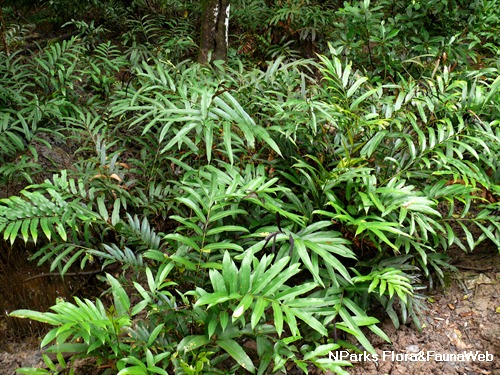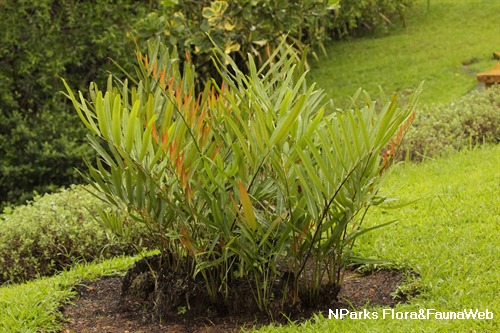
Back
Acrostichum aureum L.
| Family Name: | Pteridaceae |
| Common Name: | Leather Fern, Paku Laut, Mangrove Fern, Coarse Swamp Fern, Golden Leather Fern, Piai Raya, Larat, Piai, 卤蕨 |
Name
Classifications and Characteristics
| Plant Division | Ferns & Lycophytes (Non-Seed Vascular Plants) (Fern) |
|---|---|
| Plant Growth Form | Herbaceous Plant |
| Lifespan (in Singapore) | Perennial |
| Mode of Nutrition | Autotrophic |
| Plant Shape | Fountain (Palm-like) |
| Maximum Height | 1 m to 3 m |
Biogeography
| Native Distribution | Old & New World Tropics |
|---|---|
| Native Habitat | Aquatic (Brackish Pond / Lake / River), Shoreline (Mangrove Forest) |
| Preferred Climate Zone | Tropical, Sub-Tropical / Monsoonal |
| Local Conservation Status | Native to Singapore (Least Concern (LC)) |
Description and Ethnobotany
| Growth Form | It is a mangrove fern, growing up to 3 m tall, and thrives well under full sun. The stem (rhizome) of this species is stout, erect, and covered with relatively large scales that are about 4 by 1.8 cm. |
|---|---|
| Foliage | Dark green, erect fronds are composed of 24 - 30 pinnae (leaflet-like structure) in alternate arrangement (1 - 4 m long, 0.12 - 0.5 m wide). The petiole of the frond (known as the stipe) is usually about 1 m long. The 5 - 8 pairs of pinnae near the tip are fertile with their underside covered in reddish brown sporangia (except the midrib), while the remaining pinnae are infertile. The pinnae are oblong with a blunt tip (8 - 50 cm long, 1 - 7 cm wide) and bright red when immature. |
| Stems | Fibrous rhizomes (underground, horizontal stems) have a scaly surface. |
| Reproductive Parts - non-flowering plant | The pinnae which bear the sporangia are restricted to the upper parts of a frond at varying proportions. The sporangia and the sterile hairs (paraphyses) among them will cover the whole lower surface of the pinnae, giving it a dark brown appearance. Its spores are dispersed by wind. |
| Habitat | Occurs mostly in brackish, sometimes in freshwater, swamps, marshes and tidal forests. In mangroves, often found within inland regions. |
| Similar | The pinnae of Acrostichum aureum have blunt tips, while those of Acrostichum speciosum have pointed tips. |
| Associated Fauna | Typically colonizes mud lobster mounds which are more elevated and less likely to be flooded. |
| Cultivation | It can be propagated using its spores or by division. |
| Etymology | Greek akros, top; Greek stichos, order, referring to the lines on the lower surface of the leaves; Latin aureum, golden yellow, referring to the golden hue of the younger leaflets |
| Ethnobotanical Uses | Edible Plant Parts : Edible Leaves Food (Fruit or Vegetable): The young leaves are consumed as a vegetable. Medicinal: Fronds are shredded or crushed and applied as a poultice on wounds, boils or ulcers. In India, the fronds are used to treat snake bites. Others: In Vietnam, the dried fronds are used as material for roofing. |
Landscaping Features
| Landscaping | It is suitable as a marsh plant for the edges of ponds or waterlogged areas. |
|---|---|
| Desirable Plant Features | Ornamental Foliage |
| Landscape Uses | Parks & Gardens, Riverine, Pond / Lake / River, Marsh / Bog |
| Thematic Landscaping | Marsh Garden |
Fauna, Pollination and Dispersal
| Seed or Spore Dispersal | Abiotic |
|---|
Plant Care and Propagation
| Light Preference | Semi-Shade, Full Sun |
|---|---|
| Water Preference | Lots of Water |
| Plant Growth Rate | Fast to Moderate |
| Rootzone Tolerance | Waterlogged Soils (Drains Site), Easy to Grow |
| Transplanting Tolerance | Good |
| Maintenance Requirements | Low |
| Propagation Method | Spore, Division |
Foliar
| Foliage Retention | Evergreen |
|---|---|
| Mature Foliage Colour(s) | Green |
| Mature Foliage Texture(s) | Leathery |
| Prominent Young Flush Colour(s) | Orange |
| Foliar Type | Compound |
| Foliar Attachment to Stem | Petiolate |
| Foliar Shape(s) | Non-Palm Foliage (Lanceolate) |
| Foliar Margin | Entire |
| Foliar Apex - Tip | Mucronate |
| Foliar Base | Rounded / Obtuse |
References
| References | Yong J, Tan PY, Nor Hafiz Hassan, Tan SN. 2010. A Selection of Plants for Greening of Waterways and Waterbodies in the Tropics. Singapore: Chung Printing . 480 pp. |
|---|
Image Repository
Others
| Master ID | 239 |
|---|---|
| Species ID | 1535 |
| Flora Disclaimer | The information in this website has been compiled from reliable sources, such as reference works on medicinal plants. It is not a substitute for medical advice or treatment and NParks does not purport to provide any medical advice. Readers should always consult his/her physician before using or consuming a plant for medicinal purposes. |

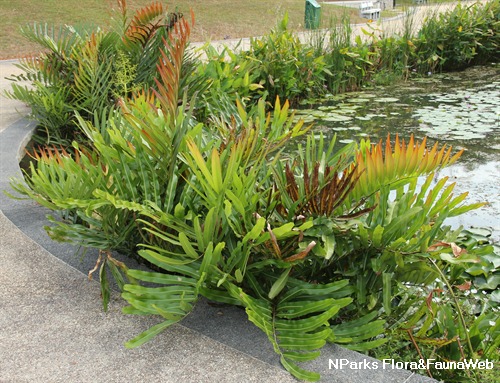
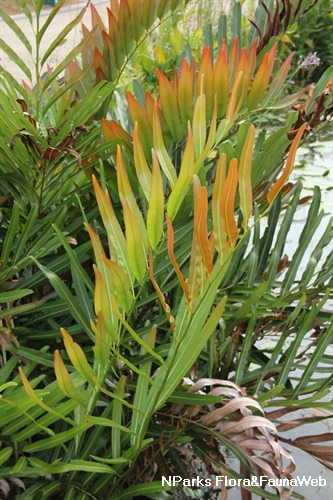
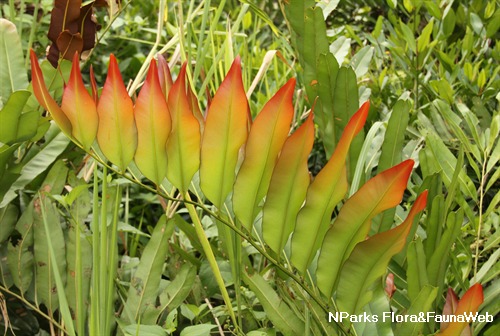
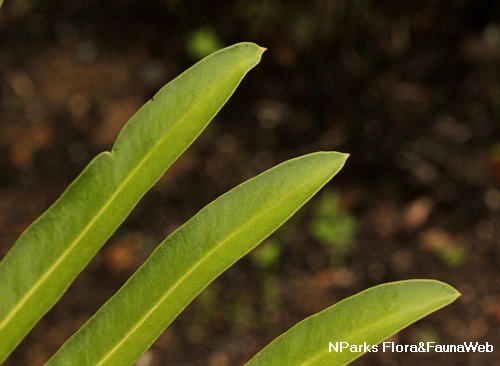
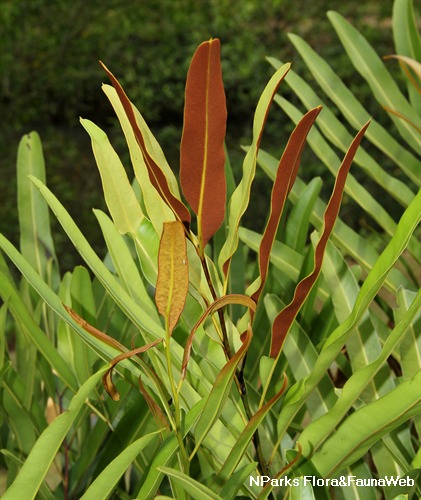
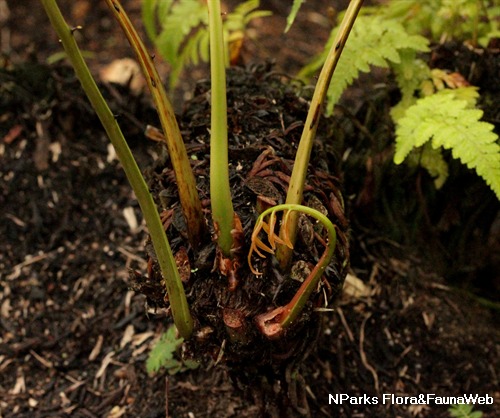
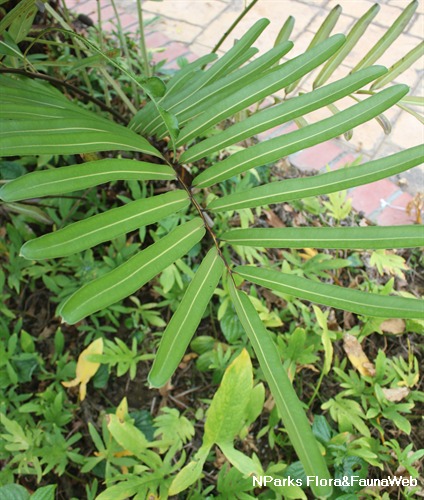
.jpg)
